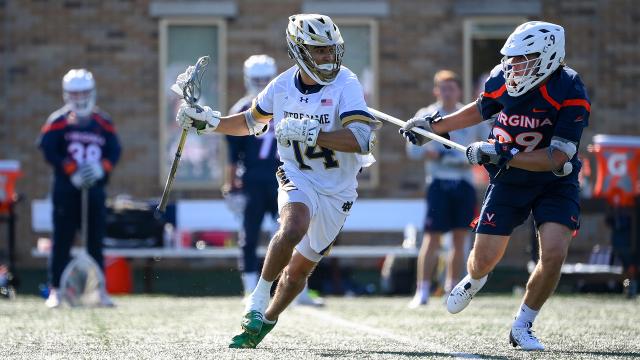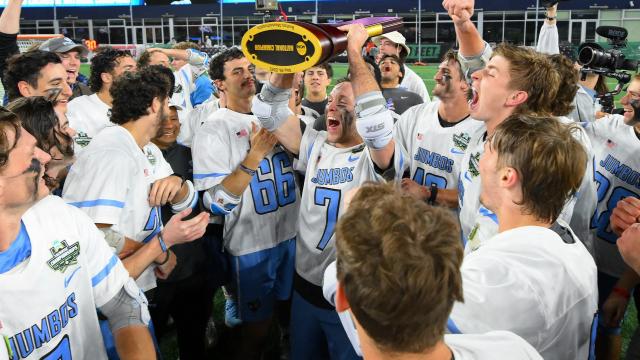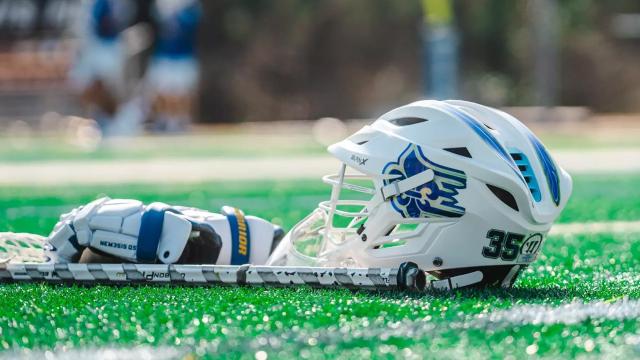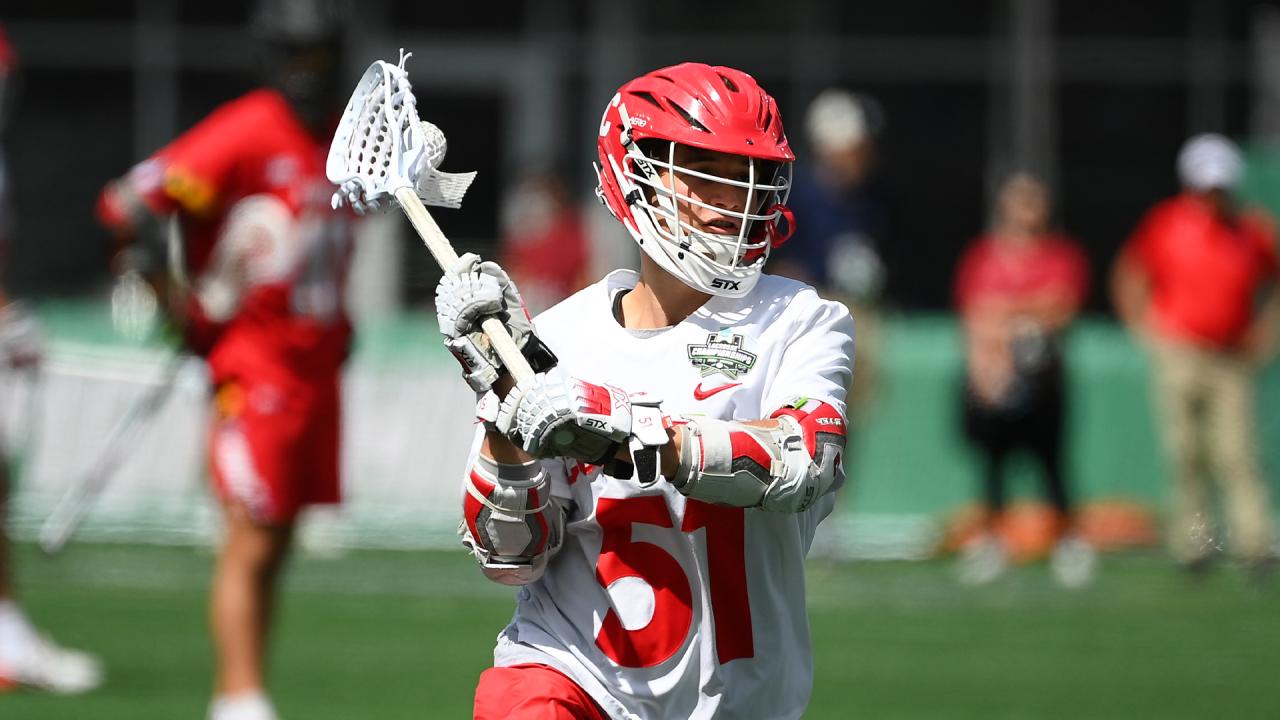
Way-Early 2026 Division I Men's Rankings: 10-6
It’s on to the bottom half of the top 10 of USA Lacrosse Magazine’s Way-Early look at the 2026 season. From here on out, it’s teams that’s played into at least mid-May — and this segment includes two that appeared in the final weekend of the 2025 season.
Previously: Nos. 25-21 | Nos. 20-16 | Nos. 15-11
10. RICHMOND
2025 record: 14-4 (5-0 Atlantic 10)
Last seen: Being the only team to threaten Cornell into the final minute of a postseason game during the Big Red’s championship run before absorbing a 13-12 loss in the Spiders’ first quarterfinal appearance.
Projected starts lost: 81 of 170 (47.6 percent)
Projected scoring departing: 114 of 383 points (29.8 percent)
Initial forecast: There was a matter-of-factness to Richmond’s hopes for last season: Get back to the NCAA tournament and then win a postseason game for the first time. With both boxes checked, the Spiders will undoubtedly recalibrate their aims for 2026. There are some losses on defense, including goalie Zach Vigue, defenseman Mitchell Dunham and long pole Tommy Stull, but Richmond still has one of the best defensemen (Hunter Smith) and short-stick midfielders (Jack Pilling) in the country to lead a unit that never seems to have a down year under coordinator Paul Richards. Meanwhile, the Spiders were comfortably running two midfields with threats scattered across each by season’s end. While Max Merklinger (31G, 21A) and Lukas Olsson (22G, 4A) graduate, four of the top five scorers are back. That group includes Lucas Littlejohn (40G, 13A), Aidan O’Neil (29G, 22A), A-10 tournament MVP Joe Sheridan (30G, 10A) and Gavin Creo (19G, 8A), who will collectively make up the nucleus of an enviable offense. There is the task of replacing faceoff specialist Jared Chenoy (.543), a four-year starter, but Richmond showed last season it could withstand some significant losses thanks to its connectedness and become an even tougher out. It was easy to wonder if that was going to happen at this time last year, but there’s no reason to make the same mistake twice. Richmond wasn’t an accidental quarterfinalist, and it will be dangerous again next spring.
9. PENN STATE
2025 record: 12-5 (3-2 Big Ten)
Last seen: Playing the sort of methodical game it wanted other than about seven costly minutes in the third quarter of an 11-9 loss to Cornell in the NCAA semifinals.
Projected starts lost: 81 of 170 (47.6 percent)
Projected scoring departing: 159 of 339 points (46.9 percent)
Initial forecast: For all the accomplishments and program firsts the Nittany Lions have enjoyed in a decade and a half under Jeff Tambroni, it’s taken until the last three years to achieve back-to-back (and then back-to-back-to-back) NCAA tournament appearances. That’s not an easy thing to do for any program, especially when it has not done so before. There’s no need to squint too hard to realize Penn State is more similar to Tambroni’s Cornell teams than ever before, right down to absorbing heavy graduation losses and finding a way to play deep into May the following year anyway (as was the case in 2025). So much of the Nittany Lions’ offense went through Matt Traynor (44G, 17A), so there will be an adjustment period, but there are still four 30-point scorers — Hunter Aquino (16G, 21A), Liam Matthews (28G, 6A), Kyle Lehman (26G, 7A) and Luke Walstrum (16G, 16A) — to serve as a foundation in 2026. Alex Ross will be back to anchor a defense which does need to find a new starting goalie with the departure of Jack Fracyon, who played all but 27:05 over the last two seasons. It would not be surprising if Penn State took an early loss or two as it replaces five starters. It also would not be astonishing if the Nittany Lions find a formula that works by Big Ten play and hear their name called on Selection Sunday.
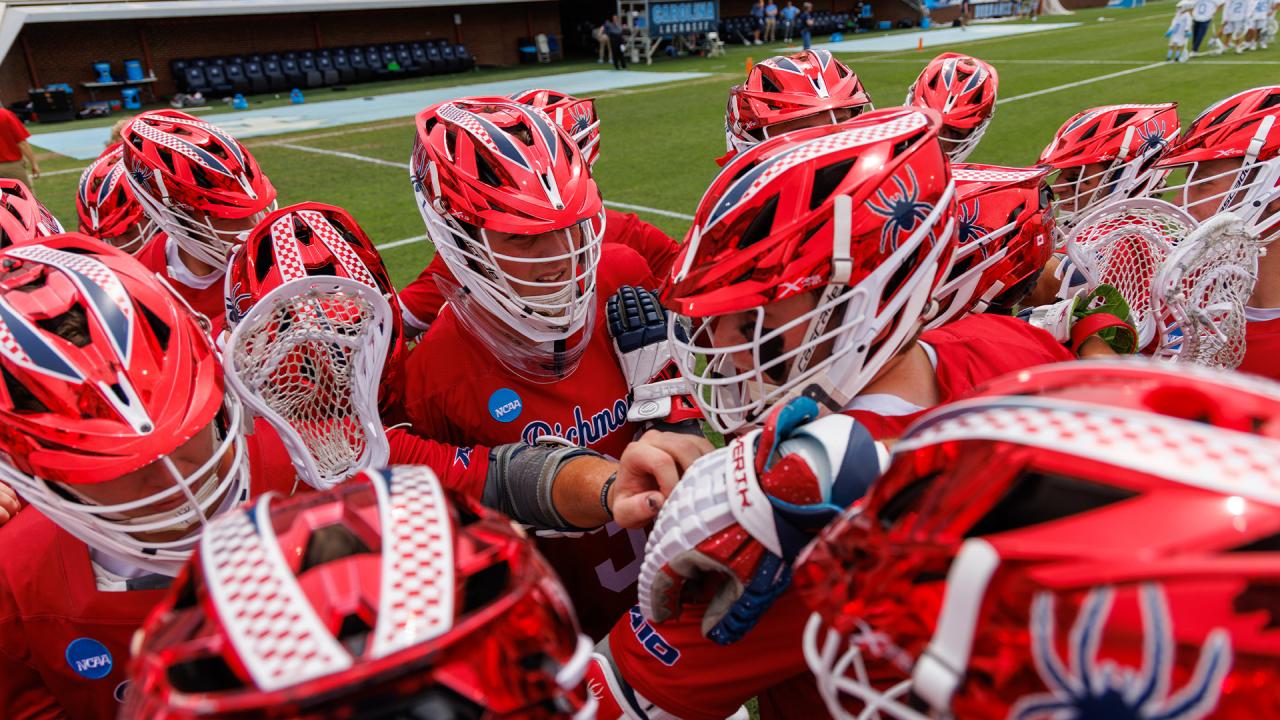
8. DUKE
2025 record: 12-6 (2-2 ACC)
Last seen: Giving up a season high in goals while bowing out 16-12 to Georgetown at home in the first round of the NCAA tournament.
Projected starts lost: 73 of 180 (40.6 percent)
Projected scoring departing: 187 of 342 points (54.7 percent)
Initial forecast: The odd thing about trying to gauge the next iteration of the Blue Devils is that it was challenging to figure them out in 2025 (and, for different reasons, 2024 as well). So here are the knowns. One, Duke will have an elite short-stick defensive midfielder (Aidan Maguire), a senior defenseman coming off a breakout year (Charlie Johnson) and a two-year starter at goalie (Patrick Jameison) to provide stability on the back end. Two, it has a pair of established options in the midfield in Benn Johnston (28G, 7A) and Max Sloat (26G, 16A). Three, it is set to have each piece of a faceoff triumvirate that checked in just above 50 percent in aggregate last season. And four, there’s transfer help to plug in on offense, including Harvard’s Owen Gaffney (14G, 4A) and Virginia’s Thomas Mencke (14G, 4A) and Kyle Colsey (a touted redshirt freshman who missed 2025 due to injury). The sum total of that may not scream “can’t-miss national title contender,” but it looks like the foundation of a top-10 team with some room to grow. If the Blue Devils can do that, they may return to Memorial Day weekend after a two-year absence.
7. NOTRE DAME
2025 record: 9-5 (3-1 ACC)
Last seen: Giving up eight unanswered goals in the final 19 minutes of a 14-12 loss to Penn State in the NCAA quarterfinals.
Projected starts lost: 43 of 140 (30.7 percent)
Projected scoring departing: 149 of 308 points (48.4 percent)
Initial forecast: Quite a bit like the Ohio State team it drubbed in the first round of the NCAA tournament, Notre Dame has a lot of stability on the defensive end and has holes to fill on offense. While short-stick defensive midfielder Ben Ramsey is a real loss, the Irish will bring back three starting defensemen (including Shawn Lyght), a superb long pole in Will Donovan and a second-year starter in the cage in Thomas Ricciardelli (.565SV%). The starting attack will have to be completely revamped as Tewaaraton Award finalist Chris Kavanagh (39G, 27A) and grad students Jake Taylor (31G, 5A) and Devon McLane (21G, 13A) exit. Air Force transfer Josh Yago (37G, 35A) is a plug-and-play option as a graduate transfer after leading the Falcons to the NCAA tournament in 2025. Notre Dame also has a vacancy on faceoffs with four-year fixture Will Lynch (.595) out of eligibility, and grad transfer Tyler Spano (.725 at Division III Washington and Lee) should help solve that piece of the puzzle. An early guess is the Irish won’t be quite as explosive as last season’s 13.6 goals per game, but it might not need to be with its defensive continuity.
6. CORNELL
2025 record: 18-1 (6-0 Ivy)
Last seen: Celebrating the program’s first national title in 48 years after handling Maryland 13-10 in the first NCAA championship game between No. 1 and No. 2 seeds since 2005.
Projected starts lost: 114 of 190 (60 percent)
Projected scoring departing: 283 of 495 points (57.2 percent)
Initial forecast: Here’s some perspective on just how much talent departed Ithaca after the Big Red’s title run: Cornell’s senior class alone would have tied for 32nd nationally in points by a team. Tewaaraton winner CJ Kirst (82G, 33A) had plenty to do with that, but Connor Buczek’s program also saw Michael Long (31G, 43A), Hugh Kelleher (27G, 12A) and Andrew Dalton (20G, 7A) depart. Plus, the Big Red also had defenseman Jayson Singer, long pole Walker Wallace and goalie Wyatt Knust (.537SV%) graduate. That’s a lot, and no team can take those sorts of losses (especially when they include a generational player like Kirst) and not have an adjustment period. But while the Big Red won’t be as good right out of the chute as last year, they still have some tested solutions. Ryan Goldstein (43G, 50A) and Willem Firth (32G, 17A) had monster sophomore seasons, Brendan Staub turned in a superb postseason and will anchor the close defense and rising senior faceoff ace Jack Cascadden (.609) will be even more valuable on a team that might need some time to find itself on offense. There’s also the intangible of program culture, something Cornell has long touted and Buczek has emphasized since taking over as head coach. Cornell may or may not be a top-10 team when it takes the field in February, but it looks like there is enough still in the pipeline for the Big Red to be a threat to make noise in the postseason once May arrives.
Patrick Stevens
Patrick Stevens has covered college sports for 25 years. His work also appears in The Washington Post, Blue Ribbon College Basketball Yearbook and other outlets. He's provided coverage of Division I men's lacrosse to USA Lacrosse Magazine since 2010.

Categories
Tags
Related Articles
